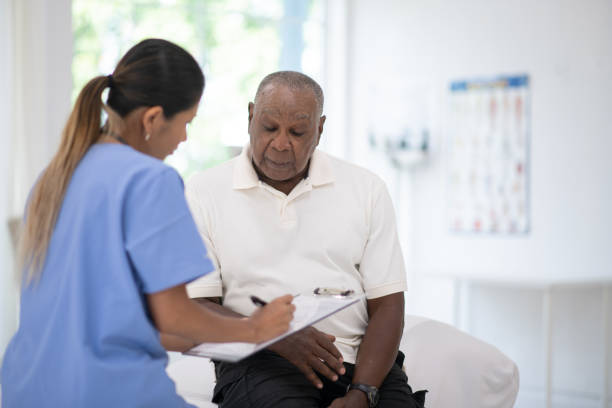Prostate cancer is one of the most common cancers in men, developing in the prostate gland, which produces semen. Early stages of prostate cancer often have few or no symptoms, making regular screenings essential, especially for men over 50. Knowing the symptoms, causes, and when to seek medical help can make a difference in early detection and treatment.
What Causes Prostate Cancer?
The exact cause of prostate cancer isn’t known, but some factors increase the risk:
- Age: Men over 50 are more likely to develop prostate cancer.
- Family History: Having close family members with prostate cancer increases your risk.
- Ethnicity: All men may be at risk
- Diet and Lifestyle: Diets high in fat, particularly from red meat and dairy, may increase the risk. Obesity and a sedentary lifestyle can also contribute.
- Genetic Factors: Some inherited genes can increase the risk of prostate cancer.
Most Common Symptoms of Prostate Cancer
Early prostate cancer typically has no symptoms. As the cancer grows, however, symptoms may appear, including:
- Frequent Urination: Many men with prostate cancer feel the need to urinate more often, especially at night. The growing prostate may press on the bladder, causing this frequent urge.
- Weak or Interrupted Urine Flow: The prostate surrounds part of the urethra, the tube through which urine exits the body. A growing prostate may cause weak urine flow or start-and-stop urination.
- Difficulty Starting Urination: An enlarged prostate can make it hard to start urinating, even when you feel the urge.
- Pain or Burning During Urination: While less common, some men with prostate cancer report discomfort or burning sensations when urinating.
- Blood in Urine or Semen: Blood in urine or semen may occur in advanced cases of prostate cancer. This is a warning sign and should be discussed with a doctor immediately.
- Erectile Dysfunction: Some men with prostate cancer experience erectile dysfunction, which can be due to the cancer or its treatment.
- Pain in Lower Back, Hips, or Thighs: When prostate cancer spreads, it may affect bones, causing pain in the lower back, hips, or upper thighs.
Risk Factors
- Age Over 50: The chance of developing prostate cancer increases with age.
- Family History: Men with a family history of prostate cancer are at greater risk.
- Diet and Lifestyle: A diet high in processed or fatty foods, especially animal fat, and a lack of physical activity can increase the risk.
- Ethnicity: All men tend to be at higher risk of having prostate cancer.
When to Seek Help for Prostate Cancer Symptoms
While these symptoms don’t always mean cancer, they should not be ignored. Prostate cancer is typically diagnosed through a PSA (Prostate-Specific Antigen) blood test, a digital rectal exam (DRE), and possibly a biopsy. Early diagnosis increases the chance of effective treatment, so men who notice any symptoms or are in high-risk groups should talk to a doctor.
For convenient, accessible healthcare, the Virtual Doctors App allows you to book an appointment with qualified doctors. You can register on their website or download the Virtual Doctors Healthplus App on Google Play.
Treatment Options
Treatment depends on the stage of cancer, overall health, and individual preferences. Common options include:
- Active Surveillance: If the cancer is slow-growing, doctors may monitor it closely without immediate treatment.
- Surgery: Surgery may be recommended to remove the prostate gland if the cancer is confined to this area.
- Radiation Therapy: High-energy rays target and kill cancer cells.
- Hormone Therapy: This therapy reduces male hormones that prostate cancer cells need to grow, slowing down cancer progression.
- Chemotherapy: When prostate cancer has spread, chemotherapy can help by attacking cancer cells throughout the body.
Prostate cancer is a serious condition that affects many men, especially those over 50 of age. Recognizing symptoms and seeking help early are key to managing the disease. If you experience symptoms or are at risk, don’t hesitate to contact a doctor. For expert help, consider using the Virtual Doctors platform to get the guidance you need.
